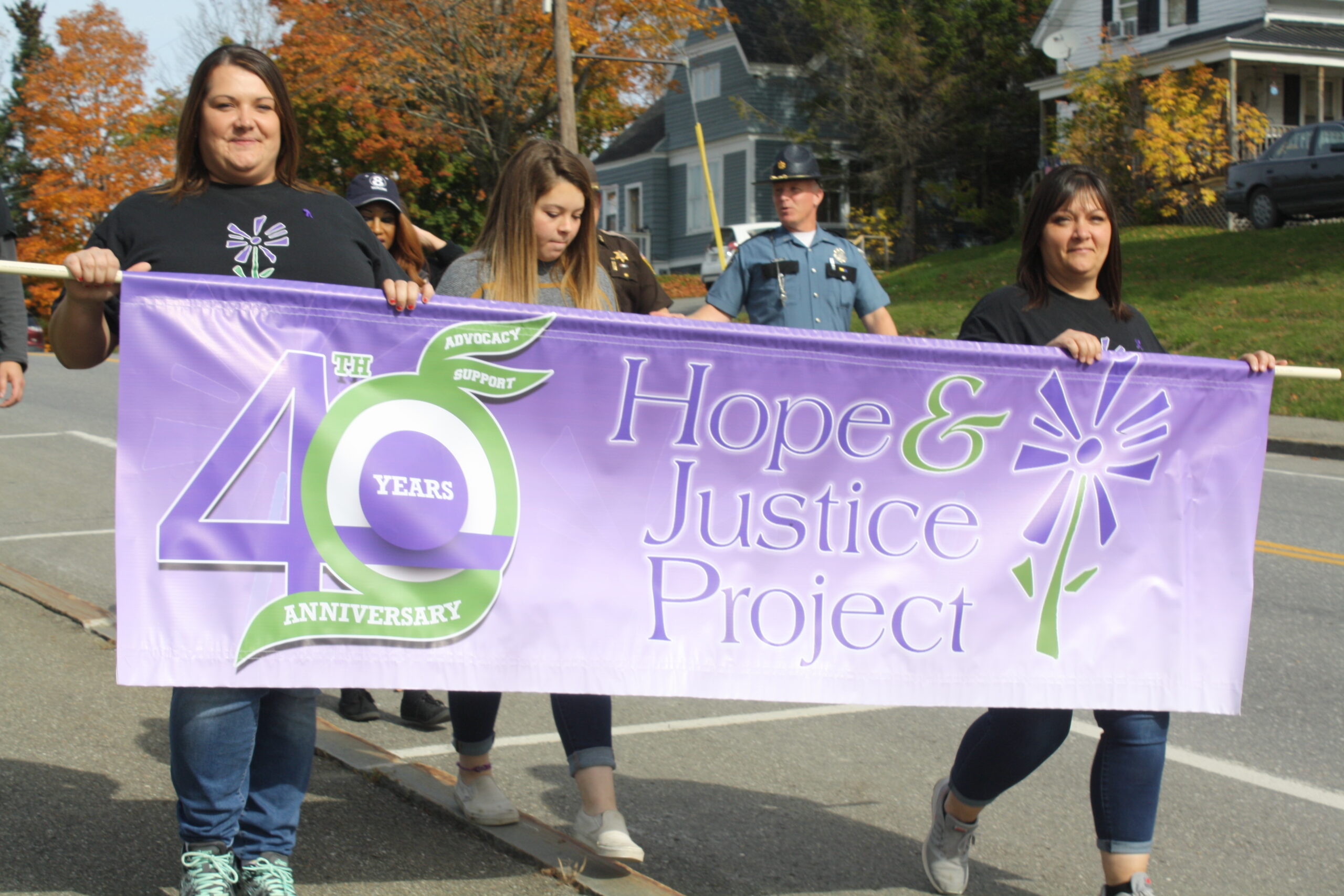
PRESQUE ISLE, Maine — October is Domestic Violence Awareness Month and the Hope and Justice Project is doing its part to ensure that resources are available to survivors and community members wishing to help them.
Throughout this month, Hope and Justice is showcasing “A Little Piece of My Art,” an exhibit of art created by survivors. The exhibit was part of the nonprofit’s Light It Up walk in Houlton this past week, and will make appearances at the University of Maine at Fort Kent library starting Friday, Oct. 15, and at an awareness walk in Presque Isle on Wednesday, Oct. 20.
The awareness walk will begin at the Mark and Emily Turner Memorial Library at noon Oct. 20. Community members will then be invited to view survivor artwork on display in the library’s Akeley Gallery. Last year’s walk and other events were cancelled due to COVID concerns.
Tammy Albert, director of prevention, education and training for Hope and Justice, said that having the survivors’ art present at each event is a way of educating people about the emotional impact of domestic violence.
“Our hope is that the art will help bring about healing and the ability for a survivor to share their feelings about their experiences,” Albert said. “We want community members to take the time to view these pieces of art, learn more of the services we provide and to be inspired by the wonderful creations.”
The Hope and Justice Project is a nonprofit organization that provides individual and group support, court advocacy, a 24/7 hotline, emergency shelters and prevention education to schools, law enforcement, businesses and community groups.
Partnering with law enforcement has served a particularly important role in helping survivors out of the most dangerous circumstances. Presque Isle police Chief Laurie Kelly said that attitudes and perceptions about domestic violence have changed greatly since she began her career in the 1980s.
“It was very frustrating for me, as I’ve never been a victim of domestic violence, to think ‘Why don’t they just leave?'” Kelly said. “But after much [awareness] training, we’ve come to understand both the victim and violator better and what factors play into those situations.”
Albert said that Hope and Justice has served nearly 1,000 people this year, with the pandemic posing more challenges to survivors and advocates.
“Intimate partner violence has escalated because of social isolation, economic stress and individuals being confined in their home with abusers,” Albert said.
Community education continues to serve a crucial role in Hope and Justice’s work. Some common physical signs that someone is experiencing abuse include bruises, black eyes or marks around the neck.
But not every sign makes a physical mark, Albert noted. A victim might display feelings of depression, anxiety or fear and become less involved with family, friends or activities they once enjoyed. Their partner might be controlling their social lives, finances or threatening to commit suicide if the victim attempts to leave the relationship.
Though leaving is often the most challenging part for victims, Hope and Justice has seen numerous people reach out for help and successfully regain independence. Those experiences fuel the work that advocates take part in every day.
“We see survivors who begin working with us feel broken and lost within the downward spiral of abuse. They feel defeated,” Albert said. “When we hear from survivors about the impact we’ve made in their lives, that’s a success story to us.”
If you or someone you know is experiencing domestic violence, the Hope and Justice Project’s hotline is available 24/7 at 1-800-439-2323.







